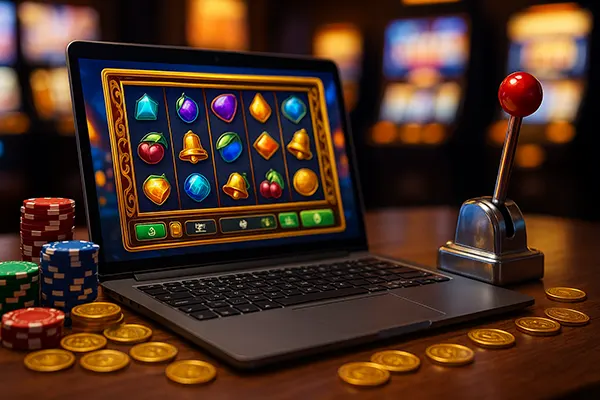
RTP and Volatility: Understanding Slot Characteristics for Informed Choices
When choosing an online slot, most players focus on graphics, themes, or bonuses, but the key to making strategic decisions lies in understanding two essential factors: RTP and volatility. These characteristics define how a slot behaves, how often it pays out, and what kind of risk-reward balance it offers. In 2025, with the continued rise of data transparency in gambling, knowing how to interpret RTP and volatility helps players enjoy a more predictable and controlled experience.
What RTP Means and Why It Matters
RTP, or Return to Player, is a percentage that shows how much of the total wagered money a slot returns to players over time. For example, a game with a 96% RTP theoretically gives back £96 for every £100 bet in the long run. However, it’s important to remember that this figure is calculated over millions of spins and doesn’t guarantee short-term outcomes. RTP is a statistical indicator rather than a prediction tool.
Slots released in 2025 generally feature RTPs between 94% and 97%, with some developers introducing adjustable RTP models. This means operators can offer the same slot with different payout percentages depending on local regulations or bonus policies. Players should always check the information section of the game before playing, as small differences in RTP can influence long-term returns.
For informed gameplay, comparing RTP values across several slots from reputable developers such as NetEnt, Play’n GO, or Pragmatic Play can help identify games that offer better mathematical value. While RTP alone doesn’t guarantee success, it sets realistic expectations and allows for more responsible bankroll management.
How to Check RTP Values
Most licensed online casinos now display RTP values directly on the slot’s information page or within its help section. Regulatory bodies like the UK Gambling Commission and the Malta Gaming Authority require transparency, meaning the data provided must be accurate. If an RTP range is given (e.g. 94%–97%), it usually means the operator has control over the active percentage.
Players can also verify RTP through official software audits. Testing agencies such as eCOGRA and iTech Labs publish reports confirming payout fairness. This independent verification ensures that games operate under consistent conditions, giving players confidence in the accuracy of the published figures.
Finally, players using demo modes can roughly observe payout behaviour over many spins. Although not a substitute for certified data, it helps build an intuitive understanding of the slot’s dynamics before investing real money.
Volatility Explained: The Balance Between Risk and Reward
Volatility, also known as variance, indicates how frequently and how much a slot pays out. High volatility slots deliver larger wins but less often, while low volatility slots offer smaller, more frequent rewards. Understanding this balance is crucial for aligning a slot with your playing style and bankroll strategy.
In 2025, most game studios categorise volatility as low, medium, or high, with some providing graphical indicators or descriptive scales. For example, titles like “Dead or Alive II” from NetEnt are known for their extreme volatility, appealing to players seeking big win potential, while “Starburst” remains a popular low-volatility option ideal for longer sessions.
Choosing volatility wisely can improve both entertainment value and budget control. High-volatility games suit players willing to take calculated risks for potentially large rewards, whereas low-volatility slots are better for steady gameplay and meeting wagering requirements during bonus play.
How to Identify Slot Volatility
Developers usually disclose volatility in game descriptions, but experienced players can also infer it through observation. A slot with rare but high payouts indicates high volatility, while frequent small wins suggest low volatility. The size of multipliers, bonus features, and maximum win potential also offer clues.
Volatility calculators and community reviews can be useful resources. Many data-based gaming platforms compile player results and publish estimated volatility indexes for popular titles. Comparing these ratings across sources ensures a more accurate understanding of a game’s performance pattern.
It’s also wise to test new releases with small stakes to observe win distribution and payout rhythm. Even games with similar RTPs can behave very differently depending on their volatility design, making practical testing an effective evaluation method.

Making Informed Choices Through Data Awareness
Combining RTP and volatility data allows players to select slots that match their preferences and goals. A balanced approach — for example, choosing a medium-volatility slot with an RTP above 96% — offers both consistent entertainment and fair winning potential. Such analysis transforms slot selection from a guessing game into an informed decision process.
Responsible gaming tools introduced in 2025, such as session analytics and return tracking dashboards, help players understand their long-term results. These features make it easier to identify whether a game fits one’s risk tolerance and to adjust strategies accordingly. Awareness of game mechanics reduces impulsive decisions and encourages smarter play.
Ultimately, knowledge is the most powerful advantage in gambling. By interpreting RTP and volatility correctly, players can enhance their experience without relying on luck alone. Understanding these indicators supports sustainable gameplay, turning slots into a more transparent and rewarding form of entertainment.
Tips for Smarter Slot Selection
Always read the game’s information section before placing bets. Knowing the RTP, volatility, and maximum win potential helps set realistic expectations. Avoid assuming that frequent wins equal profitability — focus on long-term mathematical balance.
Try games from certified developers with transparent data policies. Studios like Playtech, Microgaming, and Yggdrasil maintain consistent RTP disclosure, ensuring that players know what to expect. Choosing such titles contributes to a fairer and more secure gambling environment.
Finally, never chase losses or rely solely on theoretical returns. Even high-RTP games involve chance. Use the available data as guidance, not as a guarantee, and play within your limits to ensure that slot gaming remains enjoyable and responsible.
